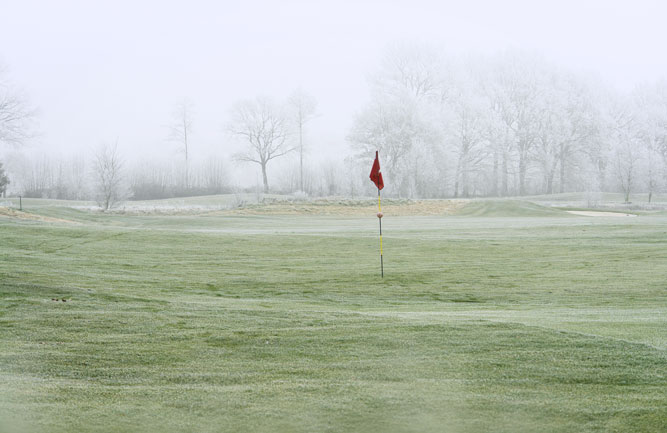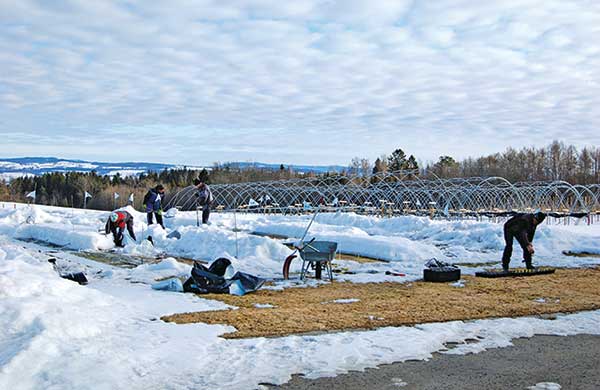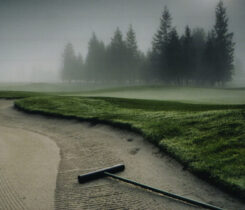Turf MD: A closer look at winter injuries
Three major injuries comprise the most common winter injuries in golf course turf. In a previous column, I discussed one of those injuries, snow molds. The remaining two are freeze injury and winter desiccation.

Photo: aristotoo / E+ / Getty Images
Freeze injury includes, besides the low-temperature injury, freeze smothering (ice covers) and chilling injury. Turfgrass plants gather cold tolerance during late summer through the fall as they are exposed to low, nonfreezing temperatures, normally below 50 degrees F. This process, known as cold acclimation, is also sometimes called hardening off.
The freeze tolerance of a turfgrass plant is associated with cell dehydration. When temperatures fall below freezing, cellular water begins to flow out of the cell into the intercellular spaces causing a decrease in water potential outside the cell.
Unfrozen water moves down the gradient and out of the cell. The colder the temperatures, the more water
travels down the gradient. Quite literally, cell dehydration is a function of freeze tolerance.
Warmer temps return
With warmer temperatures in late winter and early spring, water flows back, resulting in rehydration. If no damage occurred to the cell membranes — a puncture or rupture — the cell is alive and well. However, if the cell rehydrates and damage has occurred to the membranes cell death is imminent.
The most prevalent type of freeze injury on golf courses in the U.S. occurs at relatively high freezing temperatures — 25 to 28 degrees F — during late winter and early spring. This type of freeze injury is described as expansion-induced lysis because it occurs during freeze/thaw cycles.
The expansion and contraction of the cell membrane results in injury when ice rapidly forms or collapses and ruptures cell membranes. Excessive water around the crown of the plant during these freeze/thaw cycles in late winter increases the severity of the damage.
Cultural practices
Freeze resistance is comprised of two components —tolerance and avoidance. Tolerance is the plant’s direct response to freezing temperatures.
Avoidance is where the plant is present, but not exposed directly to the freeze. For example, if the air temperature is below zero, but the turf is covered with snow, the crown or stems do not experience the temperatures, as under the snow is considerably warmer.
Reducing freeze and winter injury through cultural management practices focuses on promoting avoidance, for example:
Promote dry surfaces. Improved drainage will reduce potential damage caused by ice covers by helping reduce the severity of ice encasement. Current research has found that the use of winter covers is enhanced when combined with proper drainage, specifically concerning ice covers.
Raise mowing heights. On warm season turfgrasses, specifically beginning in late summer through the fall, raising the mowing height will provide increased protection to the growing point during freezing temperatures.
Manage thatch accumulation. A significant thatch layer results in the plant’s crown losing contact with the soil. As the crown elevates into the thatch layer, exposure to freezing conditions increases. Reduce the likelihood of excessive growth going into the winter. Overstimulation of growth promotes succulent high water content cells that are more likely to encounter freeze injury.
Minimize shade. Although not fully researched, a degree of correlation has occurred between freeze injury and shade. Shade may contribute to increased freeze injury due to more succulent turfgrass growth and lower carbohydrate levels. Physically shaded areas tend to be wetter than full sun areas contributing to freeze/thaw cycles.












